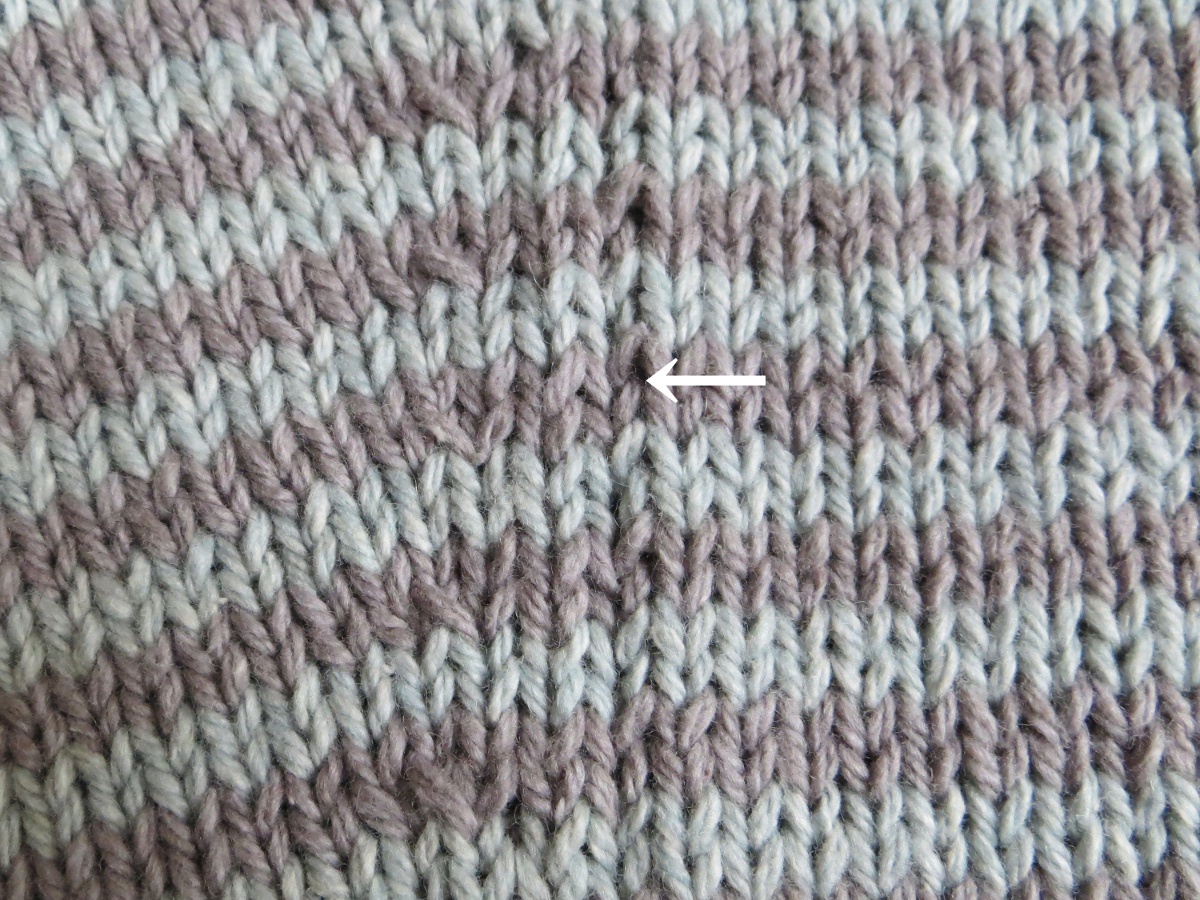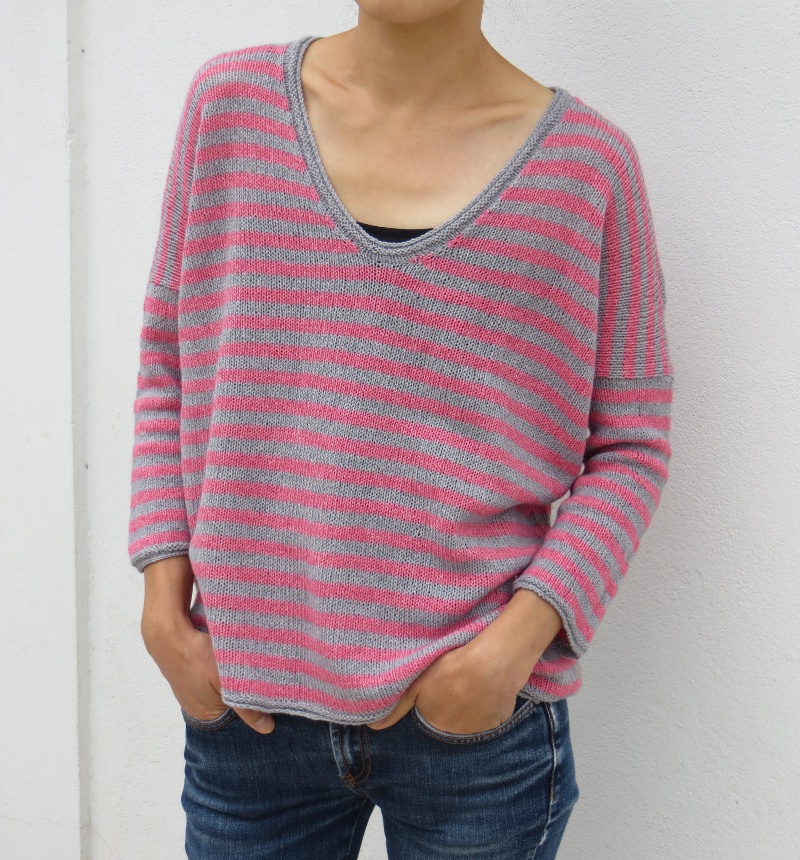This is just a little note to let you know that Spring Thaw Cowl pattern is also available – it’s just an oversight, sorry! – here on my site, and it’s free 🙂
Continue reading “Spring Thaw Cowl is also available!”
designs
Spring Thaw Tam pattern is available!
I’m pleased to announce that my Spring Thaw Tam is available at last, here on my site, or on Ravelry.
As her big sister Spring Thaw mitts, the tam is worked in Broken seed stitch with alpaca and variegated yarn, and it just evokes plants which appear when the snow begins to thaw.
Continue reading “Spring Thaw Tam pattern is available!”
tutorials
modified Icelandic BO
Recently, I needed to find a bind-off which could match German Twisted Cast On. I love using this CO for borders in ribbing because it’s easy to do – it’s a variation of a long-tail CO, which is most familiar to me -, and it gives a reversible and sturdy edge perfect for hard-wearing items (if you don’t know this technique, see this link). But the strength of this CO is, above all, its elasticity.
Continue reading “modified Icelandic BO”
making-of
Spring Thaw Tam
Just after designing my Spring Thaw Mitts, I wanted to have matching items and began to knit a little tam.
As you probably know, Broken seed stitch my mitts feature is characterized by an alternation of knit-purl rows and purl-knit rows like the classical Seed stitch. For my mitts, I’d found a solution for increases that doesn’t disturb this pattern, but with a tam, I had to rack my brains this time for crown decreases!
Continue reading “Spring Thaw Tam”
designs
Alexandre
After the very helpful and instructive test knit, I’m pleased to announce that Alexandre is now available!
Alexandre is a striped cardigan, for baby boys according to conventions, with a rather classical silhouette. But the use of Reverse stockinette give it a fresh touch and the i-cord border a certain je ne sais quoi that makes it precious.
Continue reading “Alexandre”
making-of
Reverse stockinette stripes study
I’m fond of stripes. Most of my wardrobe consists of striped t-shirts and pullovers and I’ve knitted lots of striped garments so far.
When I was planning to make a gift cardigan for the baby of friends of ours, I naturally wanted it striped, but to give a twist to the design, I decided to use Reverse stockinette st.
Continue reading “Reverse stockinette stripes study”
tutorials
The most jogless stripes
Yeah, the title is oxymoronic, but that is what I discovered through my work.
I love stripes and don’t like seaming. I naturally looked for techniques to work stripes in the round seamlessly. I came across the TECHknitter’s post on the stuff, but after several trials, I gave up knitting stripes in the round…
Continue reading “The most jogless stripes”
finished!
… a hint of summer
I’m happy to share my latest FO at last in English 😉
It’s “… a hint of summer” by Isabell Kraemer, a lightweight summer pullover for chilly summer mornings and cool evenings that often happen in the Northern half of France (unfortunately, we don’t have the weather of la Provence).
Continue reading “… a hint of summer”
tutorials
Japanese W&T
As promised at the end of the last post, here’s a tutorial of a new? short-row technique – a mix of W&T and Japanese method.
On RS (from RS to WS), as with W&T method, you knit to the turn-back point, slip one stitch, and bring your working yarn in front. I usually replace wrapped sts onto LN before turning work, this is more secure.
Continue reading “Japanese W&T”
tutorials
Japanese short rows?
You’ve perhaps heard of “the Japanese Short Rows method” which only uses a slipped st at each turn. This technique only requires split markers (or safety pins, paper clips…) you put on your working yarn to mark the connecting loop. And when you get back to the marked stitches, you will lift the loop to resolve the gaps.
Continue reading “Japanese short rows?”










